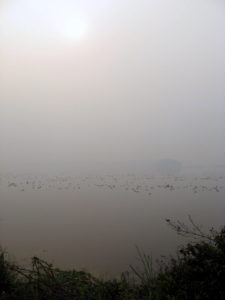Team L&M
In a bid to give a fresh lease of life to the wetlands that are forever under the threat of construction activities and encroachment, the union environment ministry has notified the new Wetland (Conservation and Management) Rules 2017. The new rules prohibit various activities in wetlands like setting up and expansion of industries, waste dumping and discharge of effluents.

A wetland is a piece of land between terrestrial and aquatic eco-system where the water table is usually at or near the surface or the land is covered by shallow water. Wetlands are crucial for maintenance of ecological balance since these support rich biodiversity and provide a wide range of ecosystem services like water storage, water purification, flood mitigation, erosion control, aquifer recharge and others.
Sadly, wetlands are often threatened by reclamation and degradation due to activities like drainage and garbage dumping, pollution, water withdrawal and changes in inflow and outflow as well as over-exploitation as a result of which a lot of biodiversity is lost and ecosystem gets disrupted.
There are 115 wetlands notified by the Centre across the country, of which 26 are of international importance under the Ramsar Convention. Ramsar Convention, to which India is a party, is an international inter-governmental treaty for conservation of wetlands.
As per the new rules, each state/union territory is required to set up a Wetland Authority in its area headed by the state environment minister. The authority will include experts from the fields of wetland ecology, hydrology, fisheries, landscape planning and socio-economics.
As per the new rules, each authority is required to prepare a list of all the wetlands under its jurisdiction, notify the list for the benefit of public, and also prepare a comprehensive digital inventory.
The authorities will also prepare a list of activities that can be undertaken as well as a list of activities that are prohibited in the wetland areas and in their zone of influence. Besides, they will also be required to work out the strategies for conservation and wise use of wetlands.